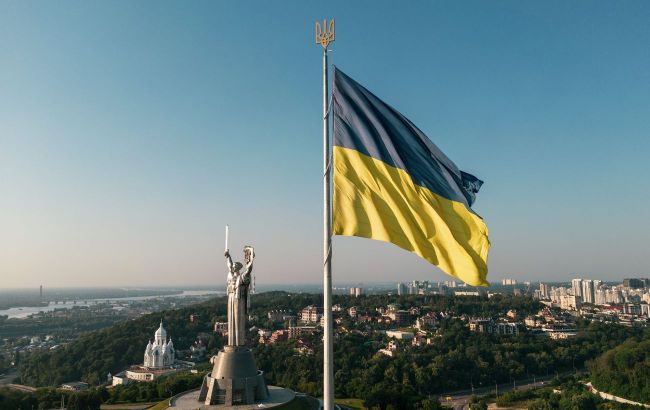National Flag Day in Ukraine: Blue-yellow banner as symbol of freedom
 Photo: Flag of Ukraine (Getty Images)
Photo: Flag of Ukraine (Getty Images)
Today, August 23, in Ukraine, the Day of the National Flag is celebrated. This holiday was established nationwide in 2004 to honor one of the key symbols of our statehood — the blue-yellow banner.
RBC-Ukraine tells the story of the history and celebration of the Day of the National Flag, which is not just an attribute, but a symbol of identity, will, and struggle for Ukraine's independence.
History of the Ukrainian flag
The combination of blue and yellow colors has a rich history. Already in the times of Rus, these colors were used in city symbolism, and the Cossacks painted golden crosses and weapons on a blue cloth.
For the first time, the blue-yellow flag as a symbol of the Ukrainian people was raised in Lviv in 1848 during the "Spring of Nations." In the Dnipro region, it became a symbol of struggle after the revolution of 1905–1907, and from 1917, the official banner of Ukrainian statehood. Under these colors, manifestations took place, Ukrainian soldiers went into battle, and in 1918, blue-yellow banners waved over the ships of the Black Sea Fleet.
Despite prohibitions, during Soviet times, Ukrainians dared to raise the national flag in Kyiv, Chortkiv, Lviv, and other cities. In 1990, it was solemnly installed over the Kyiv City Council, and by August 1991, it had been brought into the hall of the Verkhovna Rada. On September 4 of that same year, the banner flew over parliament, and in 1992 it was officially approved as the National Flag of Ukraine.
Meaning of the colors of the Ukrainian flag
The colors of the Ukrainian flag have deep historical and symbolic meaning, but their interpretation and order of placement have changed in different periods. Blue has long been associated with the clear sky, spirituality, and the pursuit of freedom. Yellow is associated with fertile wheat fields, labor, and abundance.
Together, the blue-yellow flag embodies the peaceful sky over golden fields, which is the image of the Ukrainian land and life.
However, the order of the colors has always been the subject of discussion. In 1848, the Main Ruthenian Council in Lviv approved the blue-yellow banner as the symbol of the Ukrainian people for the first time.
But at the beginning of the 20th century, in particular during the First World War, in the Western Ukrainian lands, a variant with the yellow stripe on top spread. It was with such a flag that Mykhailo Hrushevsky was welcomed in Kyiv in 1917.
Only in January 1918 did the Central Rada legally secure the order of the colors, where the blue stripe was on top. During the times of Hetman Pavlo Skoropadsky, the symbolism did not change, and from December 1918, the UNR finally approved the blue-yellow flag.
A symbol that is always with Ukraine
The blue-yellow flag has been to Everest and Antarctica, into space with Leonid Kadeniuk, and in peacekeeping missions. It was raised onto the pedestal together with Olympic champions, was a symbol of the protests of the Revolution of Dignity, and met Russian occupiers in Crimea on the minesweeper Cherkasy.
Today, the Ukrainian flag is next to soldiers on the front line, in liberated cities, and in occupied territories, where people await the moment to raise it again with pride.
A holiday that unites
Officially, the Day of the National Flag was enshrined by decree of the President of Ukraine, Leonid Kuchma, No. 987/2004 "On the Day of the State Flag of Ukraine," dated August 23, 2004. In 2009, Viktor Yushchenko initiated an annual nationwide ceremony of its raising, which is stated in decree No. 602/2009 "On amendments to the Decree of the President of Ukraine from August 23, 2004 No. 987."
Since then, every year on August 23 throughout Ukraine, blue-yellow banners are raised, honoring our history, freedom fighters, and every Ukrainian who today, under this symbol, is fighting for independence.
This year, the Independence Day of Ukraine (August 24) falls on a Sunday, but due to martial law, there will be no additional day off on Monday. According to “peaceful” legislation, holidays that coincide with weekends are usually moved. However, during martial law, this rule does not apply — all state institutions work in the usual mode.
Sources: Ukrainian Institute of National Remembrance, decree of the President of Ukraine No. 987 "On the Day of the National Flag of Ukraine," wikipedia.org.

